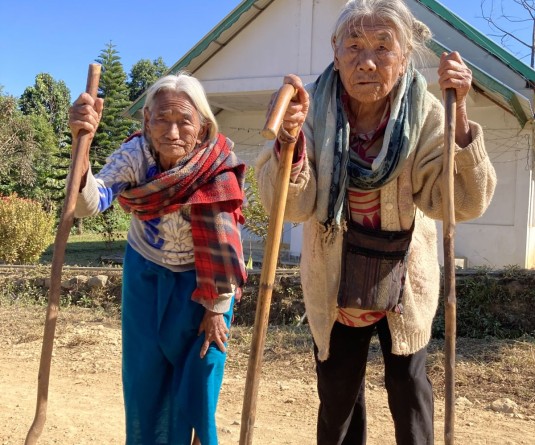
Kekhriengunuo Kire
India is an agrarian country with 833 million (68.84%) people living in rural areas as per the population of India 2011 census. It is said that more than half of rural households depend on manual labour for livelihood and faced unemployment, hunger, malnutrition and low standard of living. Amidst all these problems, Backyard Poultry Farming is emerging as a source of income generation as well as a source of required protein to low income families in the form of eggs and meat.
Backyard poultry farming, a traditional system of poultry keeping is mainly practised in rural areas in India. It is a low input business and is characterized by rearing poultry birds in small numbers in backyards under free range system whereby poultry birds scavenge for good. Natural process of hatching is practiced and there is lack of poultry health care.
Backyard poultry farming primarily involves country chicken birds. Today’s popular breeds include a number of genetically improved varieties of indigenous low-input technology (LIT) birds such as: Vanaraja, Aseel, Kaveri, Chhabra, Giriraja, Gramapriya, Kuroiler and Rainbow Rooster.
According to the Indian government’s National Action Plan for Eggs & Poultry -2022 (NAPEP), backyard poultry accounts for 20 percent of India’s poultry sector, which is worth over Rs 800 billion (around £8.5 billion). The 19th Livestock Census of India estimates that across the country, around 30 million farmers are engaged in backyard poultry farming.
Backyard Poultry Farming is emerging as a source of employment opportunities and additional income to rural households which improves the socio-economic life of the people. It brings more income with low investment in terms of feeding cost, labour cost, shelter provision and veterinary care when compared to commercial poultry farming. Poultry Birds reared under backyard system can easily sustain on kitchen waste, worms, insects, weeds, grains, rice etc. It is eco-friendly and easy to maintain backyard farming as wood and bamboo can be used to make shelter for the poultry birds. It provides quality food in the form of egg and meat, control pests and the growth of weeds, reduces food wastage and also provides women empowerment since backyard birds are managed by them, overall improving the rural economy especially rural and tribal people.
The demand for local egg and chicken and duck in the local markets and towns is high as locally reared poultry birds have low cholesterol and provides the necessary nutrients and protein to the people especially women and children.
It has been said that commercial birds have poor immunity against common poultry diseases and Commercial poultry production is capital intensive. As production is inversely proportional to the viability traits, the nutrient absorbed mostly diverted for growth in commercial chicken. Indigenous birds reared in rural areas are resistant to many diseases and pests and do not require high level of inputs pertaining to feed and healthcare to maintain production and check mortality.
However, in rural areas, lack of scientific knowledge or poultry management gives rise to the condition for loss in poultry farming. Vaccination for New Cattle Disease may curtail this loss. There is lack of technical knowledge and inadequate veterinary care to rear poultry birds against outbreak of diseases and predators.
According to a report by management consultants McKinsey & Company, as cited in the NAPEP, India’s per-capita chicken consumption is set to grow from 3kg to 9.1kg by 2030, on account of people’s rapidly changing consumption behaviour. This suggests an even greater scope for backyard poultry to grow as an increasingly important part of India’s poultry sector.
While India is among the top 5 chicken producing and top 7 duck producing countries in the world, the gap between the demand and production is still alarming. Backyard poultry farming contributes around 11% to the national production and contributes to 23% of total egg production in 2005-2006.
Since around 75% of country’s population in the rural poultry areas has limited access to protein rich poultry products, adoption of rural poultry farming may ameliorate the high incidence of protein hunger through the production of egg and meat. Backyard poultry farming is playing an important role in the upliftment of the rural economy and the socio-economic status of the people by generating income and employment with its low capital and labour investment. Although Backyard poultry farming practice has been increasing, it needs to be popularized and awareness created to uplift the rural economy and the people and meet the growing demand for locally reared poultry eggs and meat.




